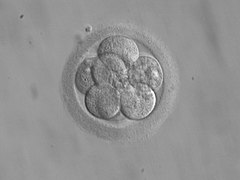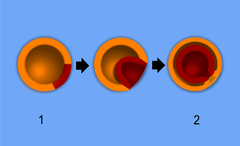Embryology is the study of the development of an embryo. An embryo is defined as any organism in a stage before birth or hatching, or in plants, before germination occurs.
Embryology refers to the development of the fertilized egg cell (zygote) and its differentiation into tissues and organs. After cleavage, the dividing cells, or morula, becomes a hollow ball, or blastula, which develops a hole or pore at one end.
In animals, the blastula develops in one of two ways that divides the whole animal kingdom into two halves. If in the blastula the first pore (blastopore) becomes the mouth of the animal, it is a protostome; if the first pore becomes the anus then it is a deuterostome. The protostomes include most invertebrate animals, such as insects, worms and molluscs, while the deuterostomes includes more advanced animals including the vertebrates. In due course, the blastula changes into a more differentiated structure called the gastrula.
The gastrula with its blastopore soon develops three distinct layers of cells (the germ layers) from which all the bodily organs and tissues then develop:
- The innermost layer, or endoderm, gives rise to the digestive organs, lungs and bladder.
- The middle layer, or mesoderm, gives rise to the muscles, skeleton and blood system.
- The outer layer of cells, or ectoderm, gives rise to the nervous system and skin.
In humans, the term embryo refers to the ball of dividing cells from the moment the zygote implants itself in the uterus wall until the end of the eighth week after conception. Beyond the eighth week, the developing human is then called a fetus.
http://en.wikipedia.org/wiki/Embryology



No comments:
Post a Comment